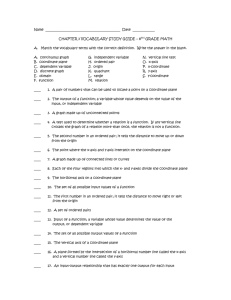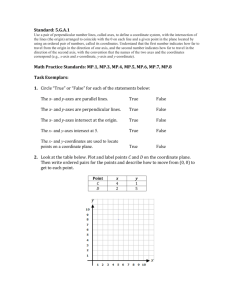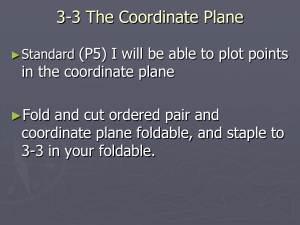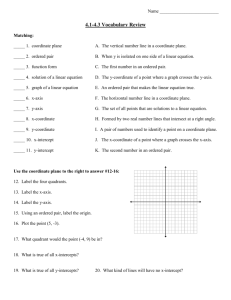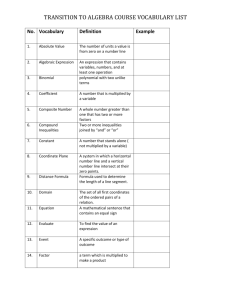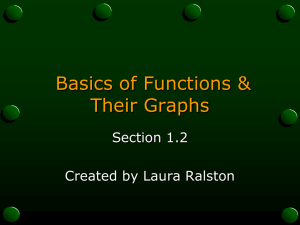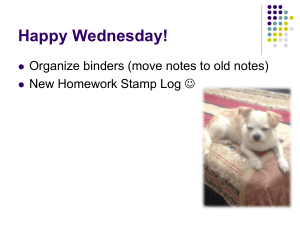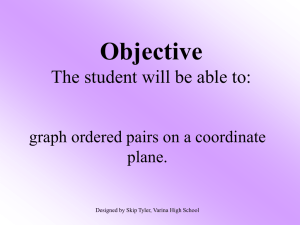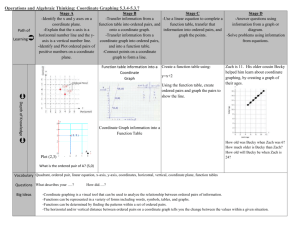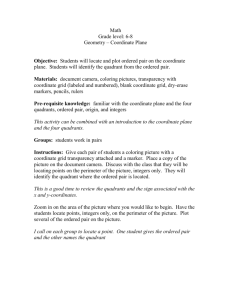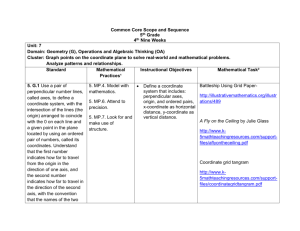5OA3
advertisement
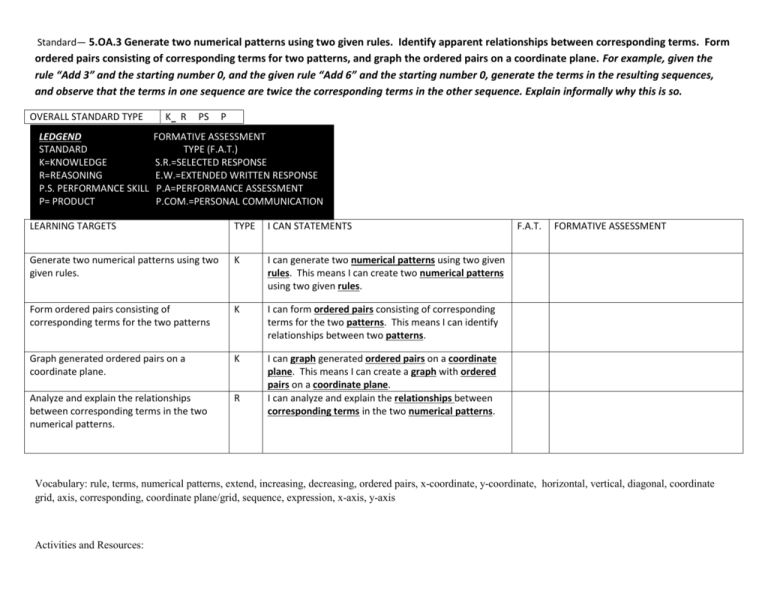
Standard— 5.OA.3 Generate two numerical patterns using two given rules. Identify apparent relationships between corresponding terms. Form ordered pairs consisting of corresponding terms for two patterns, and graph the ordered pairs on a coordinate plane. For example, given the rule “Add 3” and the starting number 0, and the given rule “Add 6” and the starting number 0, generate the terms in the resulting sequences, and observe that the terms in one sequence are twice the corresponding terms in the other sequence. Explain informally why this is so. OVERALL STANDARD TYPE LEDGEND STANDARD K=KNOWLEDGE R=REASONING P.S. PERFORMANCE SKILL P= PRODUCT K R PS P FORMATIVE ASSESSMENT TYPE (F.A.T.) S.R.=SELECTED RESPONSE E.W.=EXTENDED WRITTEN RESPONSE P.A=PERFORMANCE ASSESSMENT P.COM.=PERSONAL COMMUNICATION LEARNING TARGETS TYPE I CAN STATEMENTS Generate two numerical patterns using two given rules. K I can generate two numerical patterns using two given rules. This means I can create two numerical patterns using two given rules. Form ordered pairs consisting of corresponding terms for the two patterns K I can form ordered pairs consisting of corresponding terms for the two patterns. This means I can identify relationships between two patterns. Graph generated ordered pairs on a coordinate plane. K Analyze and explain the relationships between corresponding terms in the two numerical patterns. R I can graph generated ordered pairs on a coordinate plane. This means I can create a graph with ordered pairs on a coordinate plane. I can analyze and explain the relationships between corresponding terms in the two numerical patterns. F.A.T. FORMATIVE ASSESSMENT Vocabulary: rule, terms, numerical patterns, extend, increasing, decreasing, ordered pairs, x-coordinate, y-coordinate, horizontal, vertical, diagonal, coordinate grid, axis, corresponding, coordinate plane/grid, sequence, expression, x-axis, y-axis Activities and Resources:
